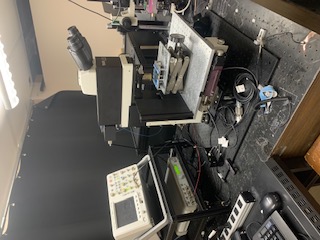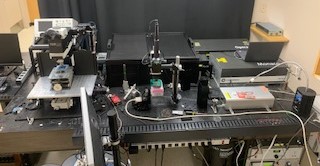Single Event Effects
About the Laboratory
The Saskatchewan Structural Sciences Centre’s Single Event Effect Laboratory was built to conduct research using single or double photon excitation using two laser sources, one is Monaco, and the other is Opera-F. The setup was designed to allow for research into one class of events called Single event Effect (SEE), which characterizes the capability of modern electronics to operate under normal and elevated levels of ionizing radiation. Such events appear more often at high altitude and in space applications. SEE are capable of causing a wide variety of effects ranging from small glitches in the output signal to complete system failures. This setup allows for users to get a very good idea of how their chip performs under ionizing radiation at a much lower cost compared to beamline time at accelerator facilities. The laser provides easy spatial and temporal control, can be focussed more to irradiate much smaller sensitive areas, and this method does not cause device performance and operation degradation due to cumulative radiation dose effects. The SSSC SEE laser testing facility was founded to help university researchers and electronic industry companies gather the necessary SEE data for newly designed electronic devices. This facility is useful to many in the field as SEE testing has become a standard within the industry.
Instruments and Techniques Used In Lab
For more detailed information, click here.
For more detailed information, click here.
Safety Information
Before coming into the lab, all users must complete “Laser Safety Awareness” course offered by the Radiation Safety Institute of Canada, found here. Upon arrival they must complete the Laboratory Specific Orientation with the research officer responsible for the Lab.Training Information
For information regarding usage and training of the instruments in this lab, please contact the laboratory manager





